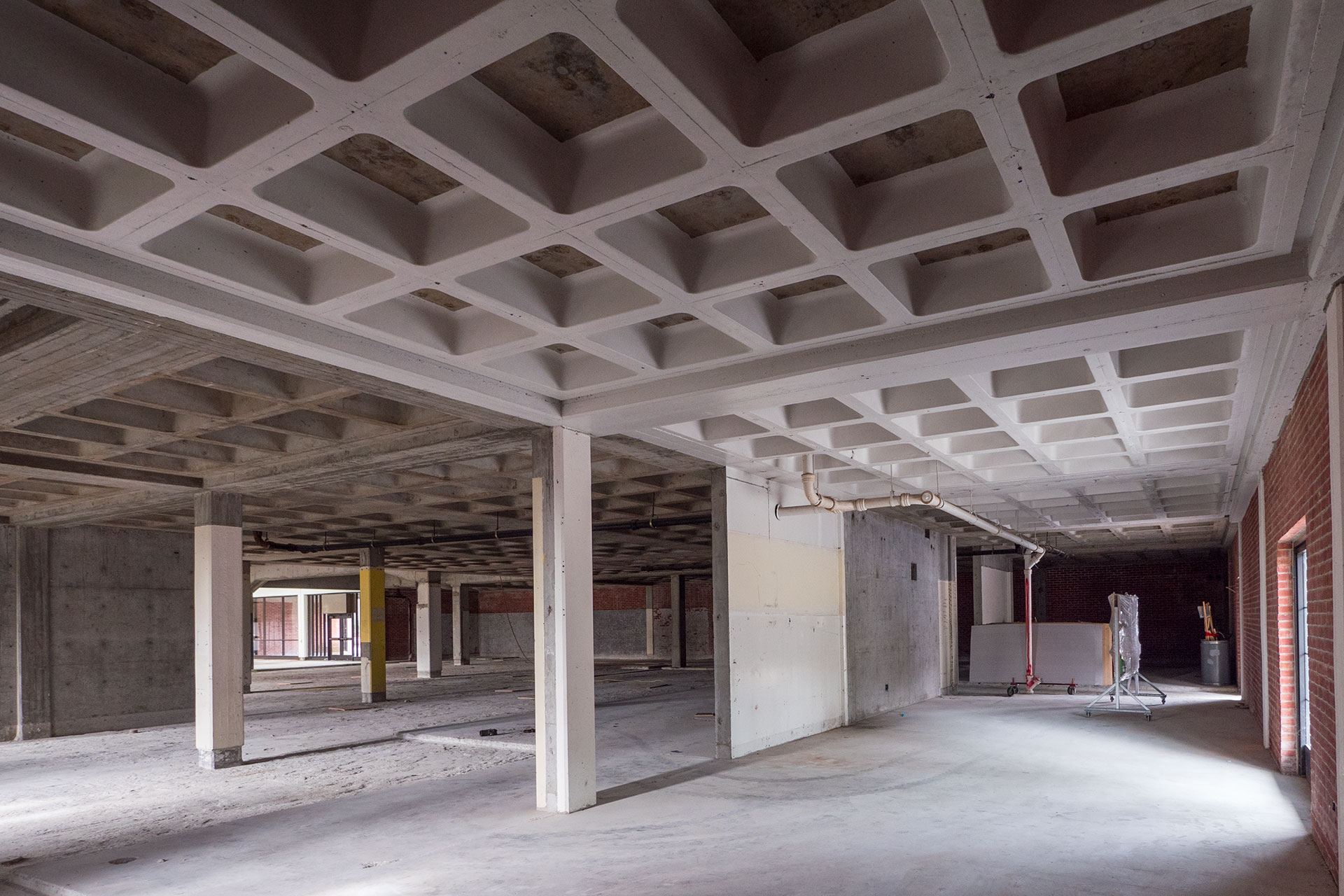 The world of architecture and construction is rapidly expanding. The tools at our disposal are increasing every day, and keeping up with trends is critical to our profession.
The world of architecture and construction is rapidly expanding. The tools at our disposal are increasing every day, and keeping up with trends is critical to our profession.
While TLCD Architecture has been modeling all of our projects in BIM for some time now, the evolution of 3D scanning is finally getting to a point where the costs/benefit tradeoff makes it a no-brainer. 3D scanning is no longer a luxury, but a staple for modern construction.
We recently had the opportunity to collaborate with our friends at Truebeck Construction as they performed a 3D scan of the interiors of the soon-to-be Wine Spectator Learning Center at Sonoma State University. We have worked with Truebeck before and they do exceptional work, but we were amazed to learn that they have their own in-house crew to perform these scans. Alex and Drew walked us through the process as they moved through the building.



The entire shell interior took them approximately 4 hours to scan. The scanning equipment uses a gimbaled laser and camera combination, and utilizing a mirrored system it spins and takes thousands upon thousands of tiny photographs paired with a distance reading measured by laser. Each point on a wall is within roughly 1/8” of each other, and is captured a minimum of four times, and the average distance is taken. As they move the tripod-mounted scanners from place to place to capture all the hidden nooks and corners, they also relocate a series of plastic spheres. These spheres are used later on to triangulate position and match up all the various scans they have taken, similar to pasting together photographs to get a single continuous montage from several photos.
The resulting ‘point cloud’ can be thought of as a three-dimensional photograph, one that with the right software, can be explored as a walk-through. This software comes in handy especially on remodel projects, where it can be used to check the accuracy of the as-built conditions (columns are known to be off by a foot or more at times), as well as documenting the rough constructions before finishes are applied. For example, it’s a useful tool to capture the path of a plumbing run, electrical conduit, or other utilities in the wall before drywall is applied or concrete is poured.
When the point cloud is placed within our digital model (a 3D model of the building we use to generate our drawings), we can quickly assess the variations between our model and the built conditions. It’s an exciting time to work in architecture. Thanks to our friends at Truebeck for supplying the point cloud and walking us through the process.


This is great. I spent a LOT of time at world of concrete this year looking at these scanners. As a gym flooring sub on TLCD projects, this tech would be INVALUABLE to us to help establish flatness and levelness of poured concrete slabs in gyms. Would help gauge curling along joints and concrete shrinkage on school gyms at that critical 8-10 month age. The entry price point is just too high for us right now and the few scanners that can get <1/8" accuracy are still $20-$50K. But if integrated with a project we would have much more successful TLCD gyms.Further it would be great for more accurate remodeling estimates.
Here are some great articles for readers to check out:
Gym 3d scan: http://trl.trimble.com/docushare/dsweb/Get/Document-517112/
Kaiser & McCarthy doing it: http://dev.mccarthy.com/quasi/qs-content/uploads/white-papers/dont-forget-to-look-down–a-case-for-floor-flatness-.pdf
Academic paper on laser flatness methods: http://www.isprs.org/proceedings/XXXVII/congress/5_pdf/23.pdf
Evan, I think you hit the nail on the head here, as the price point drops we’ll start to see more and more of this in use. Thanks for the comment. -pl
You might be interested in the process to do it in BIM etc… upcoming webinar.
http://infogeospatial.trimble.com/2017-5-17-TIMMS_Take2_GeospatialWebinarRegistrationPage.html
NICE!
Great to see this project coming along!